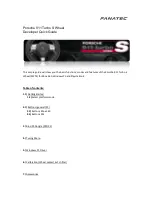
Fuel Economy
The condition of your car and
your driving habits are the two
most important things that affect
the fuel mileage you get.
Vehicle Condition
Always maintain your car
according to the maintenance
schedule. This will keep it in top
operating condition.
An important part of that
maintenance is the
Periodic
Checks
(see page
125
). For
example an underinflated tire
causes more "rolling resistance,"
which uses fuel. It also wears out
faster, so check the tire pressure
at least monthly. In winter the
build-up of snow on your car's
underside adds weight and rolling
resistance. Frequent cleaning
helps your fuel mileage and
reduces the chance of corrosion.
Driving Habits
You can improve fuel economy by
driving moderately. Rapid
acceleration, cornering, and hard
braking use more fuel.
Always drive in the highest gear
that allows the engine to run and
accelerate smoothly.
Depending on traffic conditions,
try to maintain a constant speed.
Every time you slow down and
speed up, your car uses extra
fuel. Use the cruise control, when
appropriate, to increase fuel
economy.
A cold engine uses more fuel than
a warm engine. It is not necessary
to "warm-up" a cold engine by
letting it idle for a long time. You
can drive away within 30 seconds,
no matter how cold it is outside.
The engine will warm up faster,
and you get better fuel economy.
To cut down on the number of
"cold starts," try to combine
several short trips into one.
Air conditioning puts an extra
load on the engine which makes it
use more fuel. Turn off the A/C to
cut down on air conditioning use.
Use the flow-through ventilation
when the outside air temperature
is moderate.
Before Driving
















































